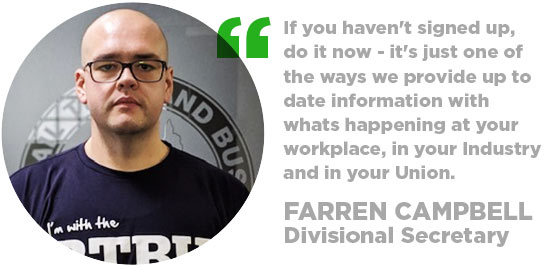IN FOCUS: Broken Hill, the birthplace of Australian unions
Dan Leece explores Broken Hill and its union links.
In 1844 explorer Charles Sturt, sighted and named the Barrier Range and noted the sighting of a ‘broken hill’ down in his diary.
Then, in 1883 Charles Rasp discovered silver ore in the region, kicking starting what was to become a rich history of, discovery, mateship, luck, hardship, misery, and vast fortunes, won and lost off the backs of men and women on such a grand scale it would catapult Broken Hill onto the world stage, and eventually have the town host the worlds largest mining company, BHP Billiton.
Earlier this year the silver city of Broken Hill had the honour of being bestowed a National Heritage Listing. The city, aside from its natural resources is renowned for notable artists such as Pro Hart and Jack Absalom, who have captured on canvas its unique surrounding landscapes and endless horizons. The city has transformed itself from it’s humble beginnings from its shacks and miner’s humpy’s to a modern day bustling metropolis….but life wasn’t always so easy.
In the early years conditions for the miners were basic and often dangerous. Poor living conditions and negligent managerial policy fed into a strong union presence from the very start, and on the 20th Sept 1884 at the Adelaide Hotel Club in Silverton a Miners Association called the Barrier Rangers Miner’s Association was formed.
The very first steps of unionism were taken in Australia.
Later, the branch was moved to Broken Hill itself where the nearly 3000 union members, out-numbered the non-union workers at a ratio of 7:1.
Bitter industrial disputes and strikes followed in an effort to improve miners’ and workers’ rights, shaking the very foundations of the town in the years 1892, 1909 and 1912. Then in 1916, the battles led to the formation of the Broken Hill Trades and Labor Council. It wasn’t without controversy though, with the dominant union at the time, the Amalgamated Miner’s Association, initially refusing to join together with the council. Some tradesmen too were separately represented by the Iron Trades Council.
Later, however, the AMA was renamed the Workers’ Industrial Union of Australia and joined the Trades and Labor Council to eventually form the Barrier Industrial Council. The newly amalgamated group helped shape a fairer and safer workplace for our nation, and still to this very day, the B.I.C fights the fight for the workers and their rights and conditions under its banner “United We Stand-Divided We Fall“.
The Trades Hall, completed in 1905, is still home to the Trade Union Movement in Broken Hill. There were proposals to build the grand structure in 1890 when the Parkes Government granted the land on which she now still stands, but the Miner’s Strikes of 1892 swallowed up many of the funds raised by its members for its construction, meaning work couldn’t commence on the Hall until 1898.
The foundation stone laid down by Parkes in 1890 met an unusual fate when it was removed from its position by larrikins during an Eight Hour Day movement event. It was used in a hammer and drill contest and eventually dumped. It was never recovered…
The Broken Hill railway line is part of the Transcontinental railway line from Sydney to Perth. It was the first rail link to Broken Hill was from South Australia and was completed in 1888. The NSW Government had refused to allow the South Australian Government to build its narrow gauge across the border to Broken Hill (some squabbling never ends) so the privately owned Silverton Tramway Company constructed 56km of line from Cockburn in South Australia to Broken Hill to transport the ore to the smelters in Port Pirie.
Initially, the link was utilised to transport water from the Darling River at Menindee as Broken Hill did not have a reliable water supply. Interestingly, an attack on the Silverton Railways Company Picnic Day train was the only enemy shots fired on Australian soil during World War 1 as a reaction to the Australian War Forces being involved in the Gallipoli Campaign.
So, how did Broken Hill gain its Heritage listing? One word: campaigning.
10 years of hard work and campaigning by its local residents and individuals, such as environmental lawyer Simon Molesworth, to have Broken Hill recognised for its role in the critical moments in the development of our nation have now finally been successful.
The granting of the heritage listing reflects the achievements, joys and sorrows in the lives of its residents and unions. It means that Broken Hill will forever be recognised as one of Australia’s most significant places – the birthplace of unions in Australia and where the 8 hour work day was first introduced.



